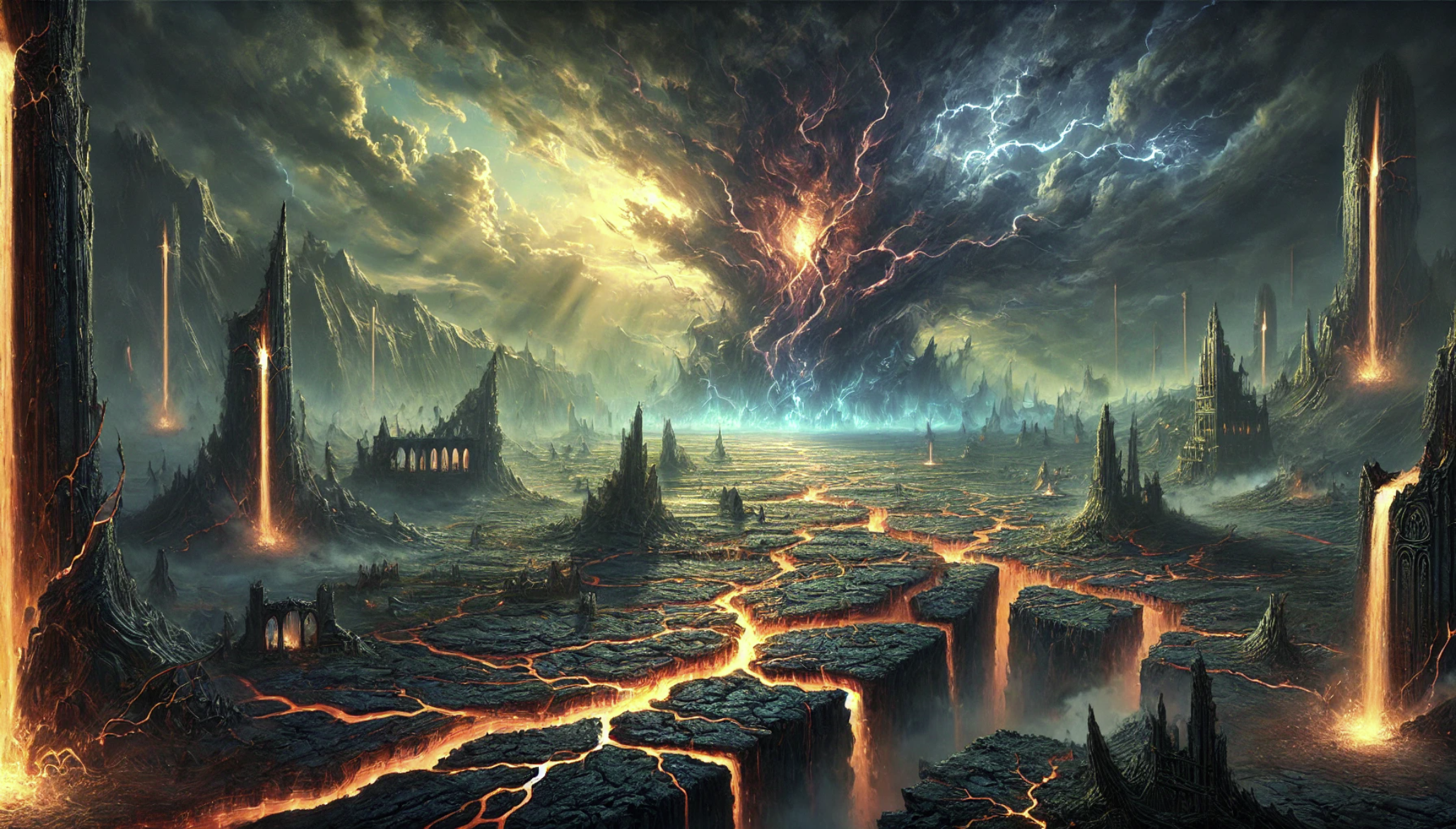The Sundering War
To understand The Sundering War, it's necessary to first understand some distict ideological differences between the nations of Ezarus and Ayonore.
- Ayonore was a nation steeped in reverence for magic, viewing it as a sacred connection to the divine and natural world. This belief extended to their governance, cultural practices, and their outlook on military engagements. Magic in Ayonore was controlled, tempered by restraint, and viewed as a responsibility as much as a power.
- Ezarus, on the other hand, viewed magic as a means to achieve supremacy. With a more militaristic and utilitarian approach, Ezarus saw magic as a tool to conquer, subdue, and reinforce their power. Their society prized innovation and arcane weaponry, and they sought control over resources—especially magical ones—to fuel their ambition for expansion.
The Battle of the Verdant Valley
About 50 years before the Celestial Lance was fired, a disputed region called the Verdant Valley became a flashpoint. Situated between Ayonore and Ezarus, this fertile valley was rich in both agricultural and minor magical resources, coveted by both nations. The Incident at Willowspire: In a tense standoff over the valley, Ezarusian soldiers established an outpost known as Willowspire within Ayonorean-claimed territory. In response, Ayonore dispatched its diplomatic envoy, led by Ambassador Duine Pakesor, to de-escalate the situation. Duine, a powerful sorceress respected for her pacifist ideals, attempted negotiation but was caught in a skirmish provoked by Ezarusian forces. Her death, seen as an affront to Ayonore, inflamed public sentiment, marking a critical turning point. Retaliatory skirmishes erupted, with small clashes over the valley becoming increasingly violent. Ayonore dispatched the Hawkescowl, an elite order of rangers, to patrol the border and protect Ayonorean settlements, while Ezarus stationed troops to assert dominance over the contested area.The First Runegear Forge
As tensions escalated, Ezarus doubled down on its commitment to arcane weaponry, establishing the Runegear Forge of Vend'Makan. The forge became a hub of weapon innovation, producing enchanted armor, magical siege weapons, and elemental artillery. Among those who championed this development was General Hekurt Luan, an influential Ezarusian military leader and visionary in arcane weapon combat. General Hekurt Luan: Known as the “Iron Lion,” Hekurt was charismatic, ruthless, and deeply committed to establishing Ezarus as a dominant power. He was an advocate of magical weapons that would act as “equalizers” against Ayonore’s more mystically inclined defenders. Luan's work led to the commissioning of the Celestial Lance, a secret project under his direct oversight, intended as the ultimate weapon to “end the Ayonorean threat.”The Sabotage of the Runegear Forge
Tensions reached a boiling point about a decade before the firing of the Celestial Lance, with an incident at the Runegear Forge serving as the catalyst for open hostilities.- The Runegear Forge Explosion: A massive explosion tore through the forge, killing hundreds of Ezarusian soldiers, mages, and artisans. Though Ezarus claimed Ayonore was responsible for sabotage, Ayonore’s leaders, including the High Magister, vehemently denied involvement, arguing that Ezarus’s experimentation with unstable magic was to blame. The High Magister of the time was a pragmatic and respected leader, and attempted to call for an independent investigation, but Ezarus dismissed this as deflection.
- Political Fallout: The explosion emboldened hardline factions within Ezarus, especially those aligned with General Luan. Public sentiment turned sharply against Ayonore, fueling calls for decisive action. Ezarus’s leadership increased funding for the Celestial Lance, accelerating the project with the intent to “strike first and secure peace.”



Comments